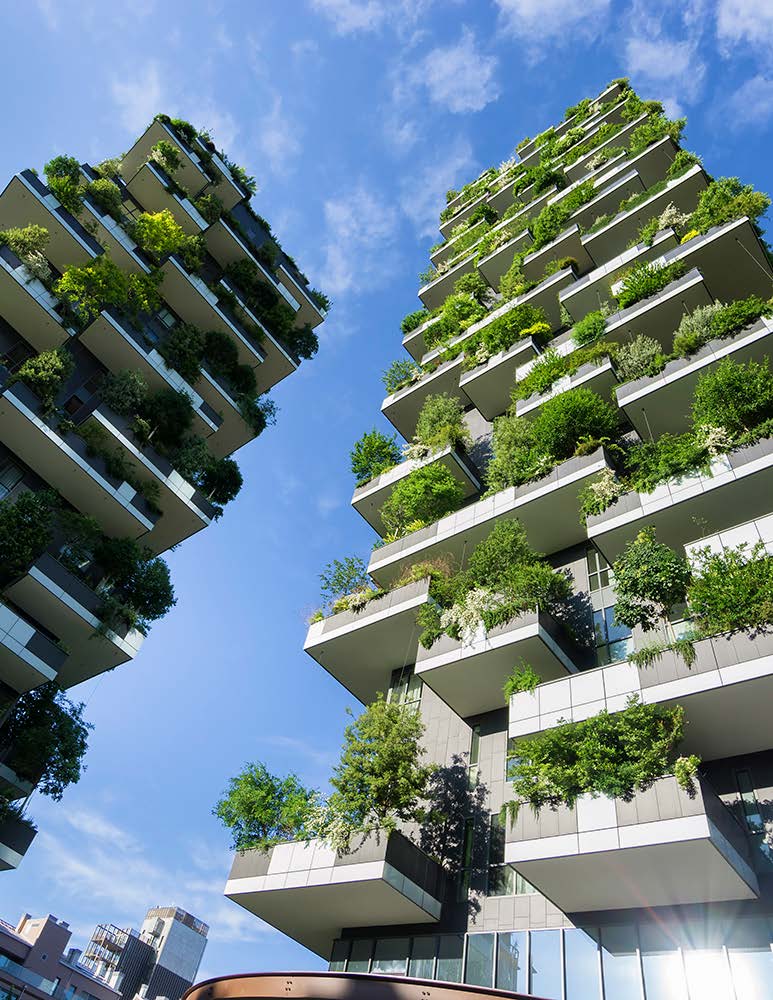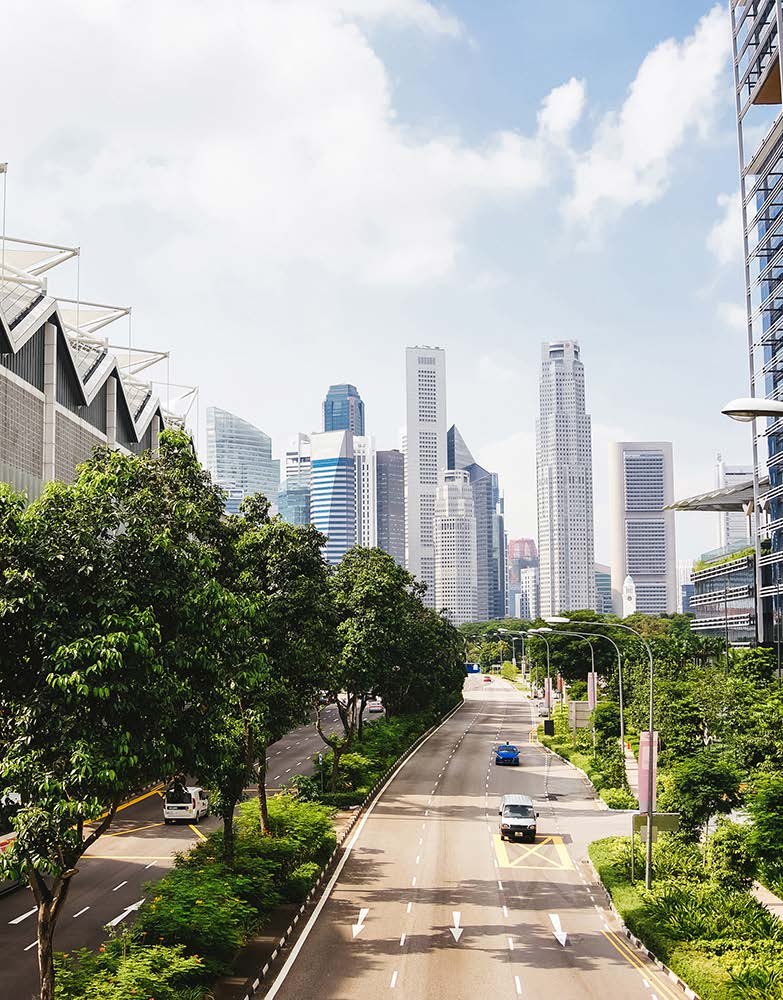As city populations grow ever larger – and move from ‘mega’ to ‘giga’ status – what fresh sustainability challenges will they meet? We asked Seequent’s Head of Sustainability, Thomas Krom, to highlight just a few.
“If you look at the number of people who are going to be living in cities in a reasonably short period of time, the figures are astronomical. Everybody is moving into town and there are a lot more of us. In fact, there are already more people living in cities today than were living on the planet when I was born… and I’m not even that old!”
As population densities rise, cities face a plethora of challenges. Initially, it might seem efficient to congregate a large number of residents in one place. But the assumed sustainability of proximity is quickly cancelled out by resource strain, and then there’s the additional heat that high-rise, air-conditioned buildings generate, stressing the microclimate.
People are starting to understand the importance of sustainability in infrastructure. As surface space becomes prohibitively expensive, or simply isn’t available, more infrastructure is going underground. [See our feature on ‘Going Underground’ further on in this edition.] “That can be a good solution,” notes Thomas “but we’re already starting to see competition for that underground space as cities move water treatment, ring roads, stations and ever more of their infrastructure below the surface.”
“Unfortunately many mega cities will develop in places where you wouldn’t ideally choose – like the coast, which will be threatened by rising sea levels. But we have to work with what we’ve got.”
The world’s fastest sinking city
Indonesian capital Jakarta is sinking by as much as 15 cm a year. Almost half the city is now below sea level, and some projections say as much as 95% of north Jakarta, closest to the sea, will be submerged by 2050. The city, home to more than 10 million, sits on swampy land, crisscrossed by more than a dozen rivers. The problem has been exacerbated by extraction of groundwater to support an inadequate piped water supply, creating even more subsidence. A $40bn, 32km outer sea wall across Jakarta Bay has been proposed to help control water levels when the heavy rains come. It’s unknown whether this will solve the problem.

Water stress
The increase in population densities and demand on water create an
increased risk of water shortages. According to the United Nations recent report on World Water Development, at present, there are an estimated 3.6 billion people (nearly half the global population) living in areas that are potentially water-scarce at least one month per year, and this population could increase to some 4.8 to 5.7 billion by 2050.
“And as people move out of rural areas, potable water is going to be a major problem for mega cities. Says Thomas. “Certainly, we need to be better at reusing our waste, and we can no longer afford to pump our sewage and wastewater into oceans and rivers, even if it is treated. However, while the technology exists to extract drinkable water from wastewater, there are also psychological and cultural hurdles to overcome. When you tell people they are drinking yesterday’s waste, they tend not to be incredibly enthusiastic about it…” According to a source at the UN Water Development programme, $114bn per year, or more than three times the current level of capital investment, is needed to achieve the Sustainable Development Goals on water supply, sanitation and hygiene (WASH).
Accelerating pressure on water supplies means cities are looking at drastic solutions that would have been considered foolhardy even a few years ago. For example, LA wants to remediate their saltwater plume under the city. A history of pumping more water than the groundwater system can bear has caused saltwater from the ocean to move into the groundwater. “Since the 1950s LA has been spending an amazing amount of money preventing that saltwater from coming even further inland, but now it wants to get rid of the saltwater in the aquifers altogether. Nobody has ever done anything like it on that sort of scale anywhere. It could take more than half a century to achieve.”
A will for wider solutions
There is much debate over the cause of these challenges, but the fact is that temperatures are rising and clearly sea levels are rising too. You can sit there with a ruler and measure it. Lots of cities are under water stress. We know these are real problems and we need real solutions. “Clearly, we need a holistic approach to look at the problem as a whole, but these are always hard decisions to make, and cities and countries are not always good at that.”
“People are trying to fix things, but I think the sheer scale still challenges many people psychologically. It’s such a huge issue to get your head around.”
That’s not to say there are not some clever ideas out there. In continental Europe, where district central heating is widespread, some authorities cool the return water by running it through the sidewalks during the winter. This keeps the sidewalks warm, so there’s less need to combat ice with salt, and all its environmental drawbacks. It also means the return water is colder when it reaches the district central heating plant, which is better for the plant and the process. The UN’s World Water Development report reviewed nature-based solutions to solving some of these challenges. The report looked at urban green infrastructure, including green buildings. This emerging phenomenon is establishing new benchmarks and technical standards that embrace nature-based solutions and become sustainable ways of improving the environmental challenges of these large conurbations.
“But clever as they are, these are just small ideas. We only have so much money and time and so much grey matter resource, and we need to focus that where we have the most bang for the bucks,” says Thomas.
Hope and help
There are some areas where you can see wider action being taken successfully, “and one of those is rainwater management,” observes Thomas, “largely because it’s an obvious financial winner, it’s easier to implement and it delivers immediate gains. Many of those advances are around being better at separating rainwater from sewage and then trying to get the rainwater into the ground as close to where it fell as possible.”
“It’s also one of the areas where Leapfrog can help. If you’re trying to infiltrate water into the city, there will be lots of hard surfaces you need to avoid, and you’ll want to do that in some engineered fashion that understands not all the soil underneath is equally permeable.
“Everything will become much more interdependent and complex, which is where Leapfrog Works can contribute. It can give you a better understanding of the entire system below the surface to help these projects happen more efficiently. But it can also help to improve communication, addressing concerns about interference by creating models from our software so people can understand this interaction. The subsurface is only going to become more important in the cities of the future, so that understanding and communication is only going to become even more important.”
The world’s largest cities by population
- Shanghai, China 24.1 (million)
- Beijing, China 18.5
- Karachi, Pakistan 18
- Istanbul, Turkey 14.6
- Dhaka, Bangladesh 14.5
- Tokyo, Japan 13.6
- Moscow, Russia 13.1
- Manila, Philippines 12.8
- Tianjin, China 12.7
- Mumbai, India 12.4
However, when you stretch that definition to embrace the entire metropolitan area rather than the city proper, it changes significantly with Tokyo rising to the top (37.8), and the likes of Jakarta (30), Delhi (26.4), New York City (23) and Cairo (20.4) jumping into the mix.
By 2030 there are expected to be more than 40 megacities around the world – those with more than 10 million inhabitants. In 2014 the number stood at 28.
The UN forecasts that by 2050, 68% of the world’s population will be living in cities. 2007 was the milestone year when city population outdistanced rural population for the first time.

Director of Sustainability
Seequent





